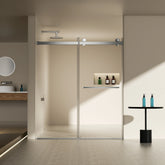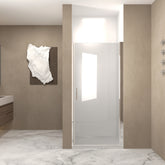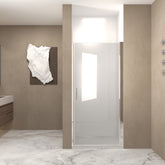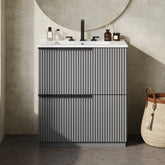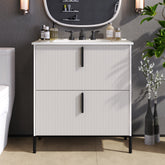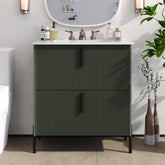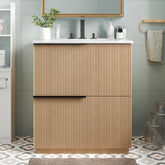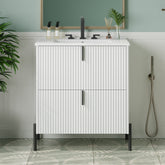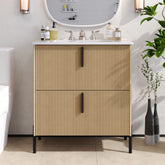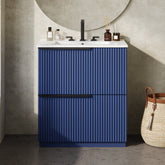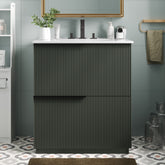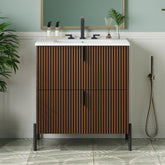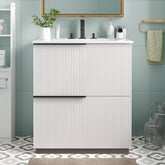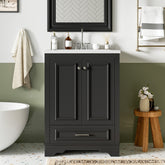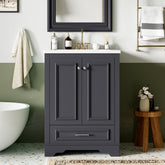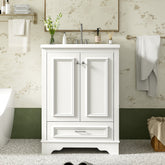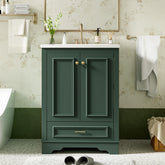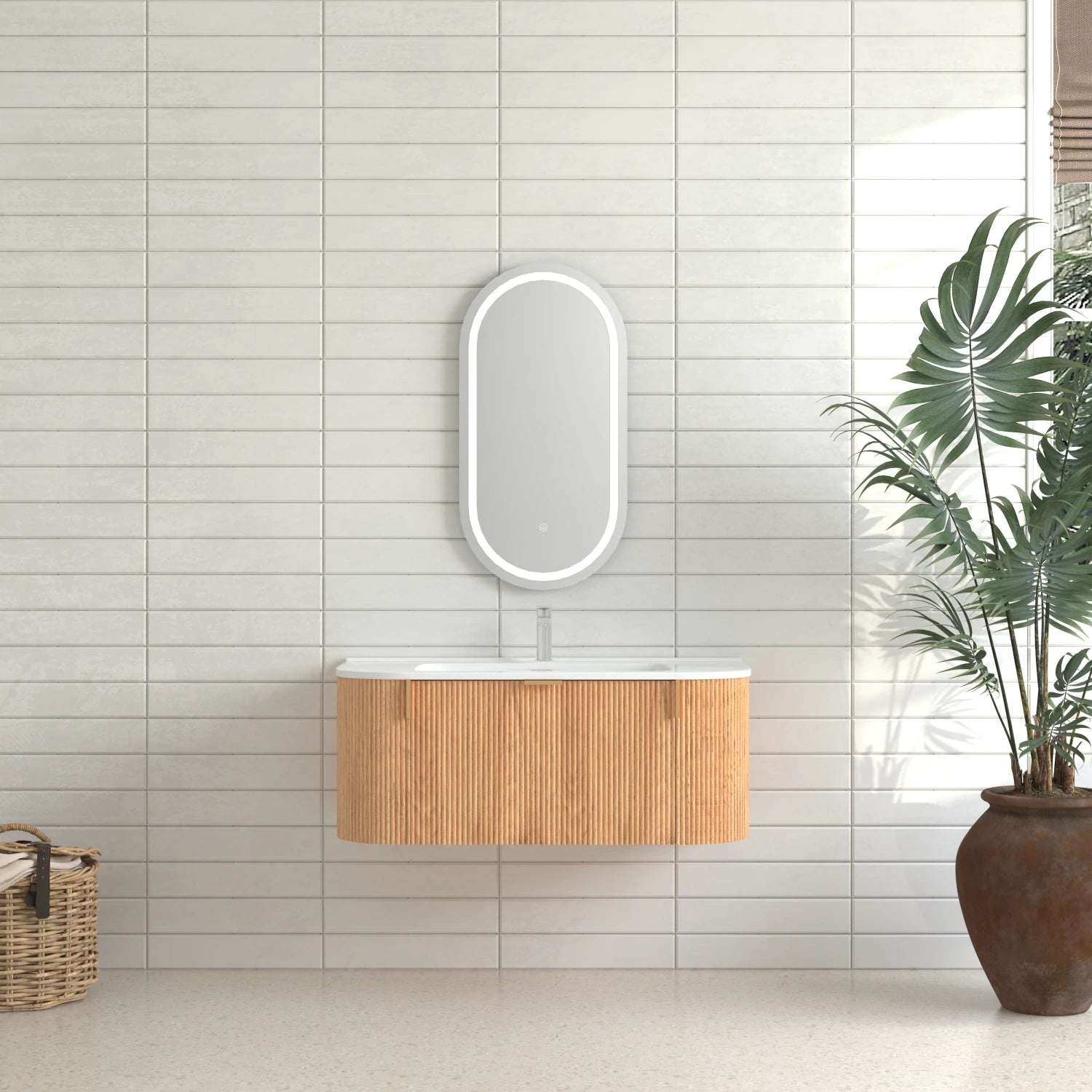Bathroom Remodel Cost Guide: What to Expect and How to Budget
1. Introduction
Planning a bathroom remodel is one of the most exciting yet financially challenging projects I’ve taken on as a homeowner. Whether I’m updating a small powder room or transforming a master bathroom into a luxurious retreat, understanding the bathroom remodel cost up front has always been essential for avoiding surprises—and stress.
In the early stages, I used to wonder: How much does a bathroom remodel cost? The truth is, the price tag can vary widely based on the size of the space, the scope of the renovation, and the quality of materials and labor involved. Without a clear budget in place, it’s easy to overspend or fall short of expectations. That’s why creating a well-thought-out bathroom renovation budget is so important. It not only helps me plan wisely but also ensures I get the most value for every dollar spent.
In this guide, I’ll walk you through what to expect when it comes to bathroom remodeling expenses. We’ll explore average cost ranges, break down where your money typically goes, and share practical budgeting tips to help you stay on track. I’ll also include cost-saving strategies I’ve personally found useful, especially when balancing style with affordability.
Whether you're planning a modest upgrade or a full-blown renovation, this Bathroom Remodel Cost Guide is designed to help you budget smart, avoid common pitfalls, and ultimately create a space that’s both beautiful and financially sensible.
2. Why Remodel a Bathroom?
When I first considered a bathroom remodel, it wasn’t just about fixing a few tiles or swapping out an old faucet. It was about transforming a tired, outdated space into something that felt fresh, functional, and reflective of my personal style. For many homeowners like me, the decision to remodel a bathroom comes from a mix of practical needs and design aspirations.
Improving Aesthetics and Functionality
Let’s face it—bathrooms age quickly. What once looked modern can easily become outdated or worn over time. I wanted a space that felt clean, stylish, and relaxing, not cluttered or out-of-touch. A remodel allowed me to update the design, enhance the layout, and make smarter use of space. Even small changes, like installing a floating vanity or better lighting, made a noticeable difference in how the room looked and functioned.
Fixing Outdated or Damaged Features
Over the years, things like leaky plumbing, cracked tiles, and poor ventilation started adding up. Ignoring these issues wasn’t just inconvenient—it was costing me more in maintenance. By investing in a well-planned remodel, I could finally address all the wear and tear at once, which ultimately saved money and improved the overall quality of the space.
Boosting Home Value
Another big motivator for me was the return on investment. A well-executed bathroom renovation can significantly increase a home’s resale value. In fact, real estate experts often cite bathroom remodels as one of the best improvements in terms of ROI. Even a mid-range update can make my home more attractive to future buyers—and if I ever decide to sell, the upgraded bathroom will certainly stand out.
Creating a Space That Fits My Lifestyle
My needs had changed over time, and so had my expectations for comfort and convenience. I wanted features like double sinks, more storage, and energy-efficient fixtures. Remodeling allowed me to tailor the bathroom to suit my lifestyle better while keeping long-term costs in mind through smart bathroom remodeling budget planning.
Whether the goal is to enhance day-to-day living, increase property value, or simply enjoy a more beautiful space, there are plenty of good reasons to invest in a bathroom remodel. For me, it was a chance to create something functional, modern, and enjoyable—while also being mindful of the bathroom remodel cost every step of the way.
3. Average Bathroom Remodel Cost Overview
When I first started planning my bathroom remodel, one of my biggest questions was: “How much is this actually going to cost me?” I quickly learned that bathroom remodeling expenses can vary dramatically depending on the size of the space, the level of customization, and the materials I chose. To avoid surprises, I took time to research the national averages and understand the different cost levels based on the type of remodel.
National Average Cost Range
In the U.S., the national average bathroom remodel cost falls between $6,000 and $25,000. Of course, some projects cost less and others much more, depending on the goals and finishes involved. Personally, I found this range helpful for setting a realistic bathroom renovation budget before talking to contractors.
Cost Breakdown by Type of Remodel
Small/Basic Remodel: $3,000 – $10,000
For those working with a tighter budget or updating a small guest bathroom, a basic remodel typically includes replacing fixtures, repainting, and minor cosmetic improvements. I went this route for a half-bath, focusing on essentials like a new vanity and toilet, while skipping any major plumbing changes.
Mid-Range Remodel: $10,000 – $20,000
My primary bathroom fell into this category. A mid-range bathroom remodel might involve upgrading to a double vanity, replacing the bathtub or shower, new tile work, and modern lighting. This price range allowed me to blend function with design while still keeping the bathroom remodeling cost under control.
Luxury/Complete Remodel: $20,000 – $50,000+
For those looking to create a spa-like experience or fully gut and redesign their bathroom, luxury remodels can include high-end finishes, heated floors, custom cabinetry, and advanced plumbing or layout changes. While I didn’t go this far, I did look into some of these features—and the prices can climb quickly!
Factors That Influence the Overall Cost
- Bathroom size – Naturally, a larger bathroom means more materials and higher labor costs.
- Labor costs – These vary by region and the experience level of the contractor. In my case, labor made up nearly half of my total bathroom remodel cost.
- Materials and finishes – From budget-friendly vinyl to high-end marble, your choices here significantly impact your final bill.
- Plumbing and electrical work – Relocating pipes or wiring can increase costs fast. I chose to keep the existing layout to save money.
- Permits and inspections – Depending on local regulations, these can also add a few hundred dollars to your budget.
Knowing these ranges and variables helped me approach my project with confidence and clarity. With a realistic understanding of bathroom renovation costs, I could balance what I wanted with what I could afford—and still achieve a stunning result.
4. Key Cost Components
As I worked through my bathroom remodel budget, I quickly realized that understanding where the money goes is just as important as setting a target number. Breaking down the key cost components helped me prioritize my spending and avoid unexpected overages. Here’s what I learned about where the biggest chunks of my bathroom remodeling cost actually came from:
Labor Costs
Labor turned out to be one of the most significant expenses in my remodel—making up about 40% to 50% of the total cost. From demolition and tiling to plumbing and electrical work, hiring experienced professionals ensured quality results, but it came at a price. Rates vary by region, but for me, hiring licensed contractors brought peace of mind, especially when dealing with water lines and wiring.
Materials and Fixtures
This was where I had the most flexibility in my bathroom renovation budget. Items like tiles, vanities, faucets, toilets, lighting, and mirrors can range from budget-friendly to luxury-grade. For example, I opted for mid-range porcelain tiles and a modern floating vanity that balanced style with value. The cost of fixtures really added up, so I made sure to shop smart and compare different options before making final decisions.
Plumbing and Electrical Upgrades
Updating plumbing and electrical systems can significantly affect your overall bathroom remodel cost, especially if you’re changing the layout. In my case, I kept the original plumbing locations to save money, but I still needed to upgrade some of the pipes and add new GFCI outlets for safety. These hidden upgrades might not be visible, but they’re crucial for functionality and compliance with modern building codes.
Permits and Inspections
Depending on where you live, permits and inspections may be required for plumbing, electrical, or structural changes. In my area, I had to pay several hundred dollars in permit fees, plus schedule inspections at different stages of the remodel. While this felt like an extra layer of hassle, it was necessary to ensure everything met local regulations and passed final approval.
Design and Planning Fees
Since I wanted a cohesive look and practical layout, I chose to work with a bathroom designer. While not everyone opts for professional help, design fees—whether for a consultant or an architect—can range from a few hundred to a few thousand dollars. It was an added expense, but one that helped me avoid costly mistakes and make the most of my space.
Understanding these bathroom remodeling expenses gave me a much clearer picture of where to invest and where to cut back. Knowing what drives costs helped me make smarter decisions that kept the project within budget—without sacrificing quality or style.
5. Budgeting Tips for a Bathroom Remodel
When I first started my bathroom remodel, I was excited—but also a little overwhelmed. With so many decisions and expenses, I knew I needed a solid plan to avoid overspending. Through research and trial and error, I discovered a few effective budgeting strategies that helped me stay on track. If you're preparing for your own remodel, here are some key bathroom renovation budgeting tips I found incredibly helpful.
Set a Realistic Budget (and Add a Buffer)
One of the first things I did was determine how much I could realistically spend on the remodel. I looked at the national average bathroom remodel cost and adjusted based on the size of my space and the quality of finishes I wanted. Then, I added a 10–20% buffer to account for unexpected issues—like hidden water damage behind the walls—which turned out to be a smart move. Surprises are common, so planning for them is essential.
Prioritize Needs vs. Wants
Once I had a budget in place, I made a list of non-negotiables (like replacing the old leaky shower) and then a separate list of nice-to-haves (like a heated towel rack). This helped me focus my spending on functional upgrades first, and only splurge on extras if I had room in my bathroom remodeling budget. Prioritizing made the entire process much less stressful and helped prevent regret later on.
Get Multiple Quotes from Contractors
I can't stress this enough—don’t settle on the first contractor you talk to. I interviewed three different professionals and received quotes that varied by thousands of dollars. Comparing quotes not only helped me save money but also gave me a better understanding of typical bathroom remodeling costs in my area. Be sure to check references, review portfolios, and ask detailed questions to find someone who aligns with your expectations and budget.
Use a Remodeling Cost Calculator or Spreadsheet
To keep everything organized, I used a bathroom remodel cost calculator at the beginning of the project. It helped me estimate costs for materials, labor, and design. As the project progressed, I tracked every expense in a simple spreadsheet. This gave me a real-time view of where my money was going and kept me accountable to my bathroom remodel budget. Seeing the numbers in black and white made it easier to make informed choices without going overboard.
Remodeling a bathroom can be a significant investment, but with the right planning and mindset, it doesn’t have to break the bank. These budgeting tips helped me approach the project with confidence—and I ended up with a space I love without the financial stress.
6. How to Save on Bathroom Remodel Costs
When I started planning my bathroom renovation, I quickly realized how fast the expenses could pile up. But I also discovered that with some smart choices, it’s absolutely possible to achieve a stylish, functional space without blowing through your bathroom remodel budget. Here are a few practical strategies I used to keep my bathroom remodeling cost under control.
Know When to DIY (and When Not To)
As someone who enjoys hands-on projects, I was tempted to do everything myself. While I did take on a few simple tasks—like painting and installing towel bars—I knew when to call in the pros. Anything involving plumbing or electrical work was beyond my skill level, and I didn’t want to risk costly mistakes. Choosing safe, manageable DIY projects helped me save money without sacrificing quality or safety.
Refinish or Repurpose What You Can
One of my favorite cost-saving moves was refinishing the existing vanity instead of replacing it. A fresh coat of paint, new hardware, and a stylish countertop gave it a whole new look for a fraction of the cost. I also repurposed a vintage mirror I already owned. If your current fixtures are still in decent shape, consider giving them a facelift before buying new ones—it’s a great way to stretch your bathroom renovation budget.
Choose Mid-Range Finishes
I love the look of luxury materials, but my wallet didn’t. Instead of going top-of-the-line on every item, I opted for high-quality, mid-range fixtures and finishes. For example, I found beautiful ceramic tiles that looked like marble and a sleek vanity that offered style without the designer price tag. It’s all about finding that balance between aesthetics and affordability.
Shop Smart: Sales and Clearances
Timing made a huge difference in what I paid for materials. I waited for holiday sales and clearance events to buy items like faucets, lighting, and tiles. Signing up for store newsletters also gave me early access to promotions. If you're not in a rush, shopping smart can shave hundreds—even thousands—off your total bathroom remodeling cost.
Avoid Major Structural Changes
One rule I stuck to was keeping the existing layout. Moving plumbing lines or tearing down walls can drive up labor and permit costs dramatically. By working within the current structure of my bathroom, I saved a significant amount of money and still achieved a completely refreshed look. Unless there’s a critical need to reconfigure the space, it's usually best to leave the layout alone.
In the end, managing costs while remodeling isn’t about cutting corners—it’s about making smart, intentional choices. These tips helped me stay on budget and still create a bathroom I’m proud of. If you’re preparing your own remodel, I hope they help you do the same.
7. Cost by Bathroom Type
When I was planning my bathroom remodel, one thing became very clear: not all bathrooms are created equal—especially when it comes to cost. The average bathroom remodel cost can vary significantly depending on the type of bathroom you’re working with. Here’s a breakdown of what I learned about remodeling different bathroom types and how it affected my bathroom renovation budgeting.
Powder Room Remodel Cost
The powder room—or half-bath—is the smallest and typically the most budget-friendly to remodel. Since it usually only includes a toilet and a sink, there are fewer materials and labor involved. In my case, I refreshed the powder room with a new vanity, mirror, and a fresh coat of paint. I spent around $2,000, which is within the typical range of $1,500 to $4,000. This made a noticeable impact on guests without a major hit to my overall bathroom remodeling budget.
Guest Bathroom Remodel Cost
Updating the guest bathroom required a bit more planning and spending. It included a full tub/shower combo, vanity, toilet, and storage. The average guest bathroom remodel cost ranges from $5,000 to $15,000, and mine landed around $8,500. I prioritized durable, mid-range materials to handle everyday use, while still keeping the space visually appealing for visitors.
Master Bathroom Remodel Cost
The master bathroom was the biggest project—and the most expensive. With dual vanities, a walk-in shower, custom lighting, and high-end finishes, the total cost can easily run between $10,000 and $30,000 or more. I invested about $20,000 in my master bath remodel. While that might sound steep, I considered it a worthwhile investment in both comfort and home value. Master bathrooms tend to involve more square footage and customization, so they naturally come with a higher bathroom remodeling cost.
Knowing what to expect from each bathroom type helped me make more informed decisions and allocate my funds wisely. Whether you're updating a tiny powder room or transforming a luxury master suite, understanding these cost differences is key to smart bathroom remodel budgeting.
8. Common Mistakes to Avoid
As I navigated through my own bathroom renovation, I made a few missteps—and learned even more by watching others make them. Planning your bathroom remodel budget is only part of the equation. Avoiding common pitfalls is just as important if you want to keep your project on track and on budget. Here are some key mistakes I learned to steer clear of.
Underestimating Labor or Hidden Costs
One of the biggest shocks in my remodel came from unexpected labor expenses. I originally focused only on the price of fixtures and materials, but installation, demolition, and prep work added up fast. Also, hidden costs like water damage, plumbing issues, or outdated wiring can blow past your planned bathroom remodeling cost. I quickly learned the value of building a 10–20% buffer into my budget for surprises.
Skipping Permits or Inspections
I was tempted to skip the hassle of permits, thinking it would save time and money. Thankfully, I didn’t. Getting the proper permits and scheduling inspections added some paperwork to the process, but it gave me peace of mind and ensured everything met local building codes. Cutting corners here might seem like a shortcut, but it could result in fines or safety hazards that’ll cost more in the long run.
Choosing Trendy Over Timeless
I love bold designs, but I had to remind myself that trends come and go. Going too trendy can quickly date your bathroom and potentially lower your home's resale appeal. I opted for a modern but timeless look with neutral tones and clean lines—style choices that I’m confident will age well. When working within a set bathroom remodel budget, I found it smarter to play it safe with big-ticket items and express personality through easily changeable décor.
Poor Space Planning
At first, I was more focused on what I wanted in the bathroom than whether it would all fit comfortably. But during the design phase, I realized that smart space planning was essential for both function and flow. Adding too many features or oversized furniture can make even a large bathroom feel cramped. I had to rethink the layout to ensure proper spacing around the vanity, shower, and toilet, ultimately saving me from a costly redesign down the line.
In the end, being aware of these common mistakes helped me stick to my bathroom renovation budget and create a space I truly enjoy. Learning from others—and a few of my own stumbles—was one of the best tools I had throughout the process.
9. Final Thoughts
Looking back on my bathroom remodel journey, one thing is crystal clear: having a solid, realistic bathroom remodel budget made all the difference. Proper budgeting isn’t just about keeping costs low—it’s about setting expectations, making informed decisions, and ultimately creating a space that meets your needs without breaking the bank.
My biggest advice is to plan ahead as much as possible. Take time to research costs, get multiple quotes, and build in a buffer for those unexpected expenses that almost always pop up. Don’t hesitate to consult professionals when it comes to design, plumbing, or electrical work—getting expert advice early on can save you money and headaches later.
Remember, a bathroom remodel is an investment in your home and your daily comfort. By carefully managing your bathroom remodeling cost and making smart choices, you can enjoy a beautiful, functional bathroom that feels worth every penny.
10. FAQ Section
How long does a bathroom remodel take?
From my experience, a typical bathroom remodel can take anywhere from two to six weeks depending on the scope of the project. Smaller remodels like updating fixtures or repainting might only take a week or two, while full renovations involving plumbing and structural changes usually take longer. Proper planning and clear communication with your contractor can help keep the timeline on track.
What is the most expensive part of a bathroom remodel?
For me, labor costs and major plumbing or electrical upgrades tend to be the priciest parts of a bathroom remodel. High-end materials and custom cabinetry can also drive up the price. Understanding these key cost components early on helps in setting a realistic bathroom remodel budget and prioritizing where to spend or save.
Can I remodel a bathroom for under $5,000?
It’s definitely possible to remodel a small bathroom or powder room for under $5,000 if you keep the project simple and do some of the work yourself. Choosing mid-range materials, refinishing existing fixtures, and avoiding major layout changes are good ways to keep costs down. However, for larger bathrooms or extensive upgrades, the cost will usually be higher.
Featured Products
AISU 30" Fluted Design Freestanding Bathroom Vanity with Ceramic Sink, Gray
- $416.74
- $416.74
- Unit price
- / per
AISU 30" Ultra Fluted Design Freestanding Bathroom Vanity with Ceramic Sink, With Leg, White
- $428.50
- $428.50
- Unit price
- / per
AISU 30" Fluted Design Freestanding Bathroom Vanity with Ceramic Sink, White
- $416.74
- $416.74
- Unit price
- / per
AISU 30" Ultra Fluted Design Freestanding Bathroom Vanity with Ceramic Sink, With Leg, Green
- $428.50
- $428.50
- Unit price
- / per
AISU 30" Fluted Design Freestanding Bathroom Vanity with Ceramic Sink, Wood
- $432.41
- $432.41
- Unit price
- / per
AISU 30" Fluted Design Freestanding Bathroom Vanity with Ceramic Sink, With Leg, White
- $413.40
- $413.40
- Unit price
- / per
AISU 30" Ultra Fluted Design Freestanding Bathroom Vanity with Ceramic Sink, With Leg, Wood
- $428.50
- $428.50
- Unit price
- / per
AISU 30" Fluted Design Freestanding Bathroom Vanity with Ceramic Sink, Blue
- $416.74
- $416.74
- Unit price
- / per
AISU 30" Ultra Fluted Design Freestanding Bathroom Vanity with Ceramic Sink, Green
- $432.41
- $432.41
- Unit price
- / per
AISU 30" Fluted Design Freestanding Bathroom Vanity with Ceramic Sink, With Leg, Dark Brown
- $413.40
- $413.40
- Unit price
- / per
AISU 30" Ultra Fluted Design Freestanding Bathroom Vanity with Ceramic Sink, White
- $432.41
- $432.41
- Unit price
- / per
AISU 24" Modern Freestanding Bathroom Vanity with Ceramic Sink, Black
- $333.30
- $333.30
- Unit price
- / per
AISU 24" Modern Freestanding Bathroom Vanity with Ceramic Sink, Dark Grey
- $333.30
- $333.30
- Unit price
- / per
AISU 24" Modern Freestanding Bathroom Vanity with Ceramic Sink, White
- $333.30
- $333.30
- Unit price
- / per
AISU 24" Modern Freestanding Bathroom Vanity with Ceramic Sink, Green
- $333.30
- $333.30
- Unit price
- / per
